Farewell, Boleyn Ground: Charting the rise of the ex-castle that made kings in E13
Vince Taylor, of Groundtastic, reflects on the 112-year history of east London’s iconic ground that’s set for its last-ever match on Tuesday night...
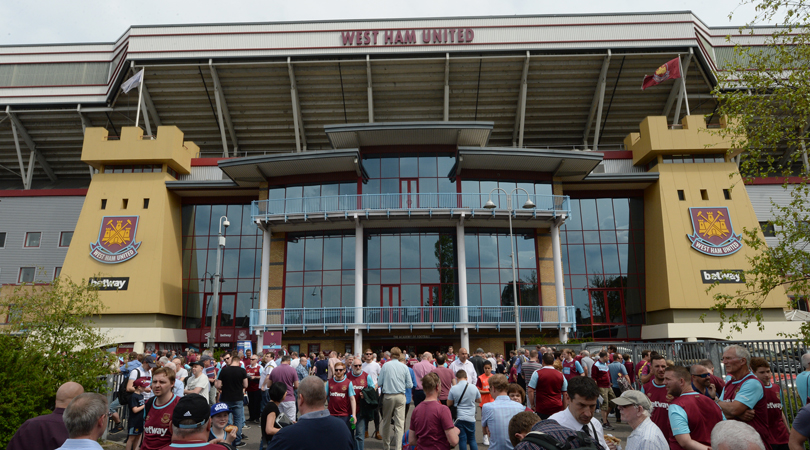
Had the 2012 Olympics gone to Paris, which looked likely through much of the bidding process, West Ham United's Boleyn Ground would currently be enjoying its 112th year of business with no immediate plans to fly the nest. The scheme to increase the capacity beyond 40,000 by building a new East Stand would have been brought out of cold storage, and in Green Street and its environs, the ancient refrain of “I'm Forever Blowing Bubbles” would be ringing out for a few more years yet.
Truth be told, the Boleyn Ground's fate was sealed the minute the first sod was cut at Stratford. Whatever plans were hatched in the interim, building a brand new stadium for just four weeks of competition made no sense, nor did downsizing the Olympic Stadium to a little-used athletics track once the Games were over. To a have a viable future, a permanent tenant drawing large crowds on a regular basis was essential, and despite the machinations that ensued, there was only one plausible candidate.
Kings of the Castle
Members of the Southern League by 1904, crowds at the Memorial Grounds had been disappointing, but the move to the more populous district of Upton Park promised an upturn in spectator numbers.
In a curious reversal to what happened in 1904, when West Ham swapped the wide-open spaces of the Memorial Grounds for the cramped confines of the Boleyn Ground, later this year the Hammers will once again be stretching themselves out at a massive arena not specifically designed for football. Furthermore, this most heritage-minded of all football clubs will be attempting the delicate task of transporting to Stratford, precious memories and traditions that have accumulated over the course of 112 years spent at Upton Park.
When West Ham United first pitched up there in 1904, the club were relative babes at the professional game, having their origins in the idealistically minded Thames Ironworks club that owner Arnold Hills had set up in 1895. Members of the Southern League by 1904, crowds at the Memorial Grounds had been disappointing, but the move to the more populous district of Upton Park promised an upturn in spectator numbers.
The ground was leased from a Catholic organisation, which as well as the playing field, also owned an adjacent school. It was housed in a 16th-century red-brick building with two castellated turrets, known as Green Street House – or more popularly, Boleyn Castle. Local legend implied a connection to Anne Boleyn, but recent research suggests otherwise.
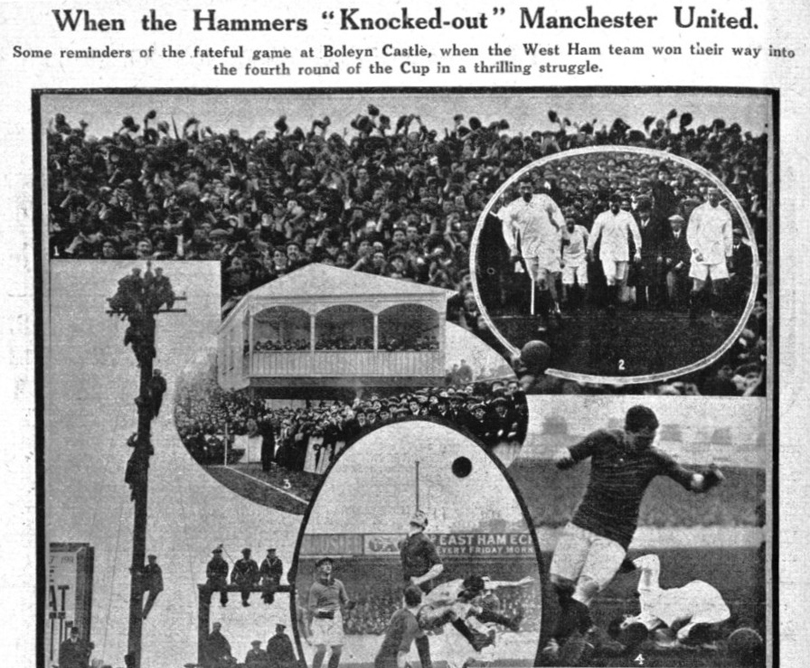
Certainly for the first few decades, the ground was referred to as Boleyn Castle, with the club incorporating a castle motif into their badge. Indeed, West Ham were sufficiently proud of the building to include it as a backdrop to the annual team photocalls, but despite this, what was left of the 'castle' became increasingly dilapidated and was pulled down in 1958 to create a new car park and front entrance.
The best features, fun and footballing quizzes, straight to your inbox every week.
Ad-hoc advancement
A Southern League derby against Millwall on September 2, 1904 marked the first match at the Boleyn Ground, with an encouragingly large crowd of 10,000 in attendance.
Unlike the grander London football grounds, a masterplan or blueprint for the development of the Boleyn Ground never really existed. Rather, it was allowed to evolve as circumstances demanded, though one of its lasting characteristics – the proximity of the crowd to the pitch – was present from the start.
Knocked into shape in just seven weeks during the summer of 1904, initially, the ground's principal feature was a long low grandstand on the Green Street side, the first of four different West Stands to occupy that part of the ground. A changing shed was set in one corner, an odd-shaped elevated pavilion was erected for the benefit of club directors and the press, and the pitch tightly enclosed by a wooden fence.
A Southern League derby against Millwall on September 2, 1904 marked the first match at the Boleyn Ground, with an encouragingly large crowd of 10,000 in attendance. As well as complementing the ground – capacity estimated at 20,000 – press reports remarked on the exceptional closeness of the stands to the pitch.
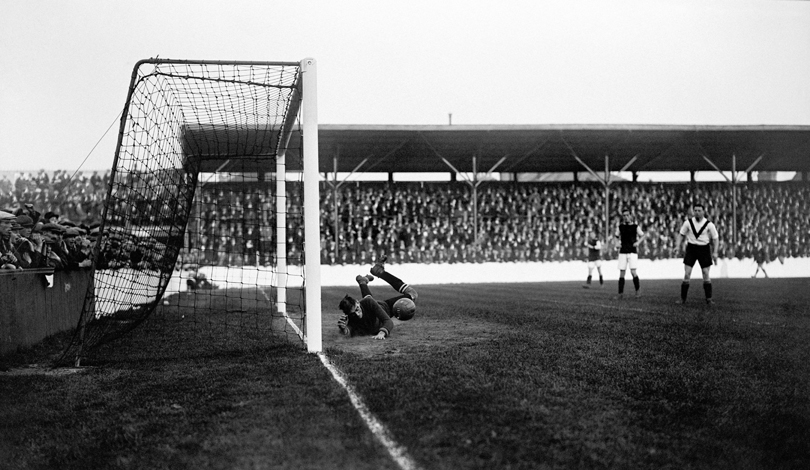
West Ham didn’t join the Football League until 1919, but gathering support from the working-class population of the East End between 1904 and the outbreak of the Great War, the club established its enduring identity as standard-bearers for east London. Big matches during this period could sometimes pull in crowds of 20,000 or more, with 27,000 cramming into Boleyn Castle in 1911 when West Ham defeated Manchester United in an FA Cup tie.
Having outgrown the first incarnation of the Boleyn Ground, in 1913 a bigger West Stand was built, comprising an elevated seating deck and a large area of covered standing. At the same time, terraces that would later become the North and South Banks were raised at either end.
First impressions count
With Tottenham, Arsenal, Clapton Orient, Chelsea and Fulham already members of the Football League, West Ham finally joined the party in 1919/20, when the competition was extended to 44 clubs. The Hammers quickly made an impression in Division Two, winning promotion to Division One in 1922/23, and also participating in the famous 'White Horse' FA Cup final, which was the first to be held at Wembley.
By the time all the work was completed in 1925, the Boleyn Ground's capacity had swollen from 32,000 to 45,000, with room for 25,000 under cover.
A ground more in keeping with their newly acquired First Division status was the next item on the agenda, and in 1925 West Ham's directors authorised a rebuilding programme costing £45,000. A towering double-decker grandstand rose up on the Green Street side of the ground, the scale of which represented a coming of age for the still-callow Hammers.
Though designed by outside architects, the stand was built in-house by W J Cearns Ltd, a building firm with a longstanding connection to West Ham at boardroom level. Seating 4,600, with room for a similar number of standing spectators in the section below the seating deck, the stand was easily the rival of any other in London at the time.
The roof from the previous grandstand was salvaged and redeployed at the southern end, providing additional covered accommodation for 'shilling' spectators, whose only form of shelter before then had been provided by the stand on the east side of the ground. Not inaccurately known as the Chicken Run, this rudimentary stand contained wooden terracing and had originally been open to the elements before a simple roof was added. By the time all the work was completed in 1925, the Boleyn Ground's capacity had swollen from 32,000 to 45,000, with room for 25,000 under cover.
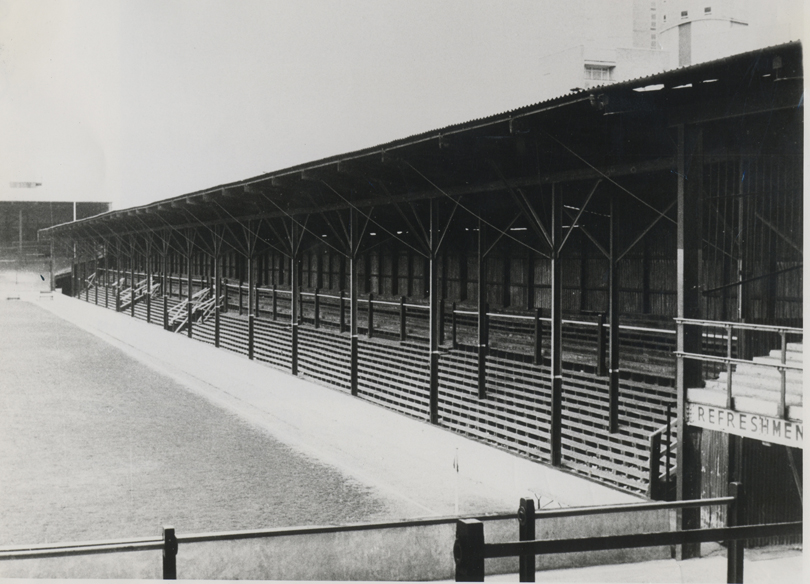
There is come confusion as to the Boleyn Ground's record attendance, for the club's records were lost during the Second World War. Modern reference books give the record as 42,322 (vs Tottenham, Division One, October 17 1970), but crowds of 44,810 (vs Birmingham City, FA Cup, March 4 1933) and 43,528 (vs Charlton Athletic, Division Two, April 18 1936) are also sometimes quoted. Whatever the true figure, for the majority of those standing on the terraces it would have been a test of their resolve – the Boleyn Ground of old was not a venue built for comfort.
Lights, please
While West Ham did not regain their First Division status until 1958, the installation of floodlights in 1953 kick-started one of the Boleyn Ground's great traditions – when the sky turns dark and the floodlights are switched on, it truly comes alive.
Due to its closeness to the docks, the Boleyn Ground found itself in the firing line during the Second World War, with the South Bank, Chicken Run and the club's offices sustaining bomb damage. Though it took a while to effect repairs, in true 'make do and mend' fashion, the Boleyn Ground was soon up and running again once football resumed after the war.
While West Ham did not regain their First Division status until 1958, the installation of floodlights in 1953 kick-started one of the Boleyn Ground's great traditions – when the sky turns dark and the floodlights are switched on, it truly comes alive.
The first match under lights took place on April 16 1953, when a crowd of 25,000 watched a friendly against First Division Tottenham Hotspur. Though primitive by today's standards, the floodlights more than paid their way over the next few seasons. Friendlies against a variety of continental sides proved popular, including Milan, and were a precursor to West Ham's successful European Cup Winners’ Cup runs in future years.
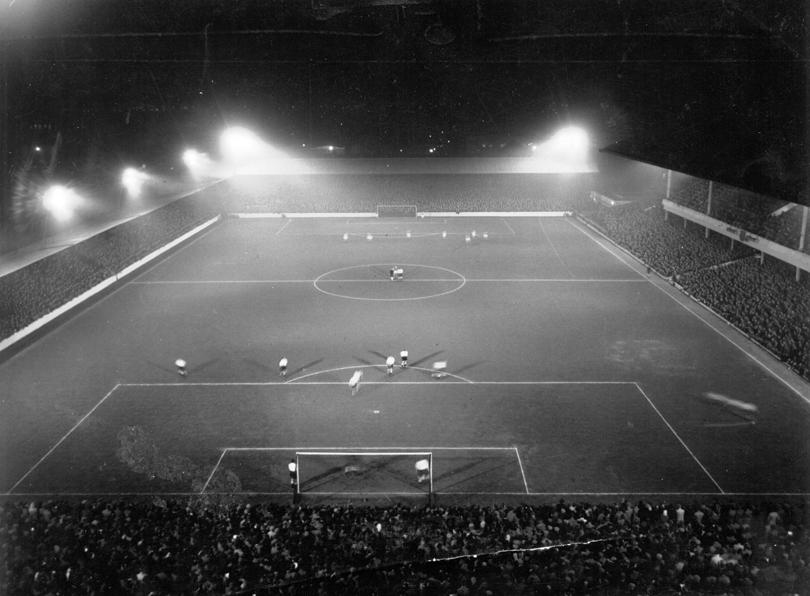
Following promotion to Division One in 1958, which came after an absence of 25 years from the top flight, attentions turned to improving the ground.
The demolition of the remains of Boleyn Castle freed up space to make a new entrance off Green Street, while in 1961 the North Bank gained a roof. Unlike the roof at the smaller South Bank, which only covered the rear portion of the terracing, the North Bank roof stretched down to encompass the whole of the terracing, in doing so amplifying the volume of West Ham's noisy supporters still further. At the same time, a new set of floodlights – a four-corner tower installation costing £15,000 – was erected. In 1965, the lopsided appearance of the West Stand was finally addressed when an extra bay was built, boosting capacity by a further 700.
The silky sixties
Despite being all-seated nowadays, West Ham fans still refer to this side of the ground as the Chicken Run.
It was during the 1960s that West Ham really came into their own. Winners of the FA Cup in 1963/64, and the European Cup Winners’ Cup in 1964/65, the year 1966 also figured large, with the club providing three members of England's winning World Cup team.
The ground at which Booby Moore, Geoff Hurst and Martin Peters paraded theirs skills was essentially an updated version of the venue as developed in 1925. Though beloved by West Ham's supporters, the Boleyn Ground was more homely than awe-inspiring.
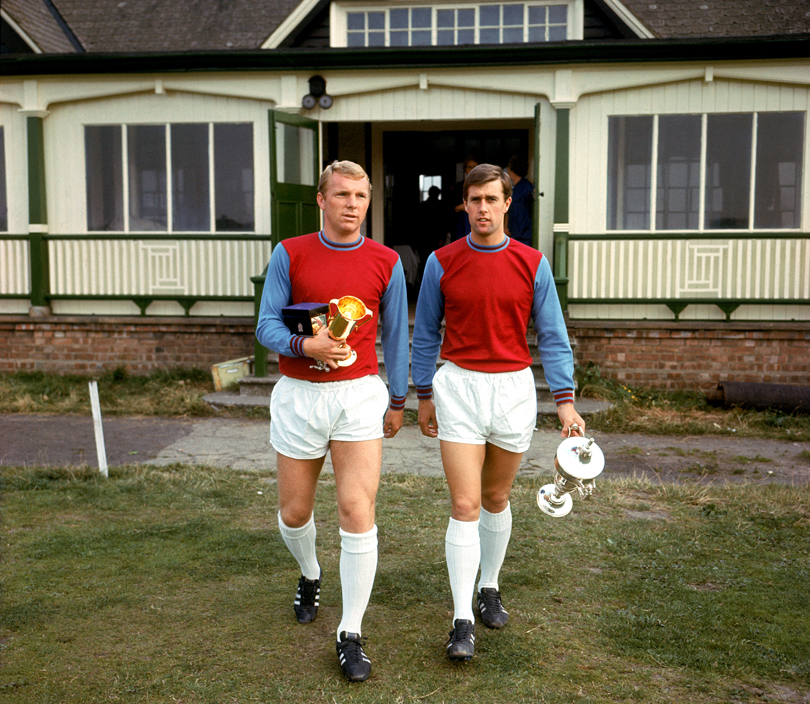
Plans to replace the Chicken Run first came to light in the 1930s, but somehow the structure tottered on until 1968. By that stage it was an ageing relic of timber and corrugated iron, not to mention a severe fire hazard due to the rubbish that used to pile up in the voids below the hollow terracing.
The club would have preferred to build a grandstand similar in dimensions to the West Stand, but due to a lack of space, West Ham opted instead for a modest cantilever stand with 3,500 seats that was fully opened for the first time in January 1969. So as to maintain the tradition of the Chicken Run, a terrace holding 4,000 – the same capacity as the old stand – was constructed in front of the seating deck. Despite being all-seated nowadays, West Ham fans still refer to this side of the ground as the Chicken Run.
The only major change at the Boleyn Ground between then and the publication of the Taylor Report in 1990 was the installation of seats in the paddock section of the West Stand. As was the case at nearly every major ground in the country, the Taylor Report asked serious questions about the continued viability of the Boleyn Ground, with the venue's capacity falling to 29,000.
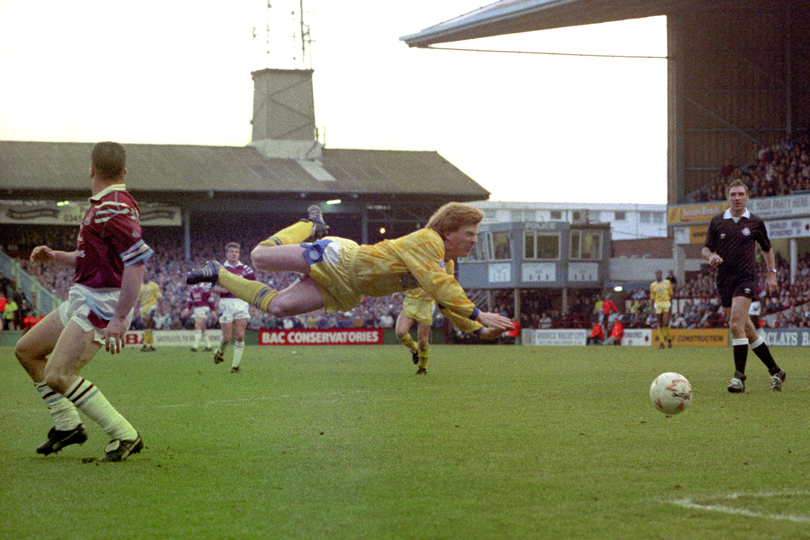
The acquisition of extra land adjacent to Green Street in 1991 was a lifesaver, for it freed up space for expansion. Raising the finance to redesign the Boleyn Ground as an all-seater stadium was another matter. A highly controversial bond scheme was launched which drove a wedge between the board and West Ham fans. Disillusioned supporters stayed away in protest, and West Ham's tight knit relationship with their followers was severely dented. Such was the failure of the scheme, West Ham turned instead to the banks to get the Boleyn Ground revamp underway.
Shifting of stands
Between 1993 and 2001 three new stands were built, raising the capacity to 35,550 and radically altering but not entirely removing the Boleyn Ground's unique character.
The colossal Dr Martens Stand (now Betway Stand) seats 15,000 across its two tiers, whose executive boxes double as hotel rooms on non-match days.
First up in 1993 was a tall double-tiered stand at the southern end of the ground. A handsome structure, which shared some of the same design features as the North Bank Stand at Arsenal's Highbury Stadium, it housed a total of 7,595 seats and 20 executive boxes. Named the Bobby Moore Stand in honour of the recently deceased England and West Ham great, it was followed in 1995 by a similar but slightly smaller doubled-tiered stand, seating 6,000. Initially called the Century Stand (the club were formed as Thames Ironworks in 1895), it was later named the Sir Trevor Brooking Stand.
Also in 1995, one of the best spectator standing experiences at a significant English football ground came to an end, when the East Stand terracing was converted into seating. Most impressive of all, at least in terms of its size, was the fourth and final stand to be built on the Green Street side of the ground. Using the extra space made available, and shifting the pitch away from the East Stand to create a sizeable gap along that touchline, the colossal Dr Martens Stand (now Betway Stand) seats 15,000 across its two tiers, whose executive boxes double as hotel rooms on non-match days.
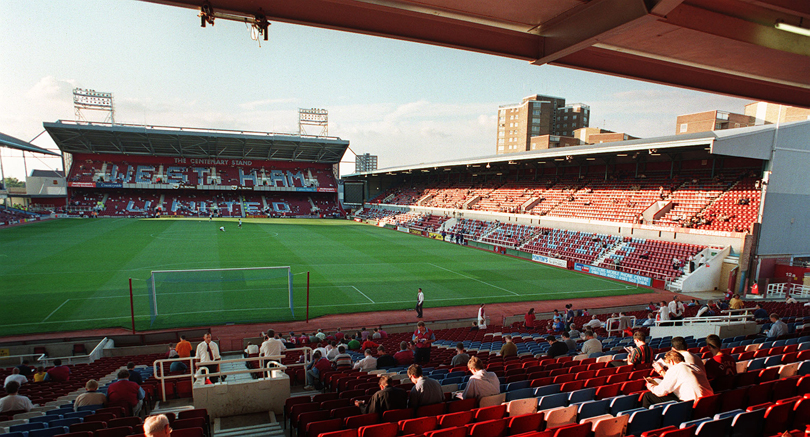
Not so easy to admire is the current front entrance, which looks out onto Green Street. The two faux castle turrets are the epitome of tackiness, making this attempt to tap into West Ham's heritage look like something from Banksy's recent Dismaland art project.
Last hurrah
In only 11 seasons in their history have West Ham's gates averaged more than 30,000 – all but one of them occurring this century
It’s with a mixture of excitement and dread that West Ham fans are approaching the Hammers’ last competitive match at the Boleyn Ground against Manchester United on Tuesday night. Not only does it mean leaving a ground whose claustrophobic compactness always seemed a perfect fit, it risks knocking the Cockney edges off a club that has always been more Petticoat Lane than Westfield Shopping Centre.
In only 11 seasons in their history have West Ham's gates averaged more than 30,000 – all but one of them occurring this century – yet in years to come an extra 20,000 supporters will have to be found if the Olympic Stadium's 60,000 capacity is to be filled. For the first season at least, the club says it has sold over 50,000 season tickets.
As noted earlier, a key feature of the Boleyn Ground through much of its long history has been the proximity of the crowd to the players. Even with the addition of retractable seating at the Olympic Stadium, at no ground in the country are fans going to be more distant from the pitch. They will certainly miss their beloved Boleyn.
Vince Taylor is the editor of Groundtastic – The Football Grounds Magazine. It is published once a quarter, in March, June, September and December
